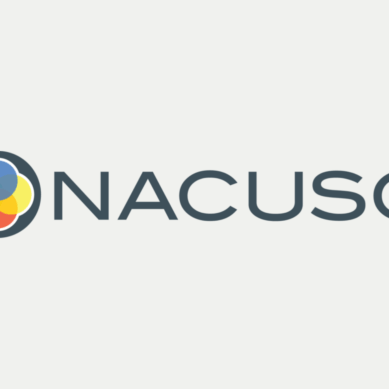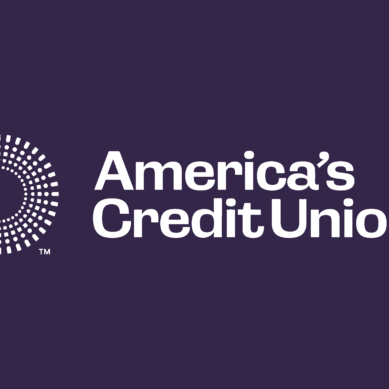The CFPB’s future is uncertain. In fact, it may disappear altogether under the Trump administration. But one thing is clear: consumers demand greater control over their financial data. As the US government navigates the chaos of change, it’s time for credit unions and CUSOs to take control and give members what they want: access and control of their data. An acceleration toward open finance ecosystems—where transparency and convenience are at the forefront—will enable CUSOs and credit unions to tap into a seismic shift in member behavior.
Open finance is still the best and fastest path to growth. As evidence, in March 2024, Financial Data Exchange (FDX) announced that the number of consumers actively using its FDX API for secure open finance data sharing grew from 2 million in 2019 to 76 million in 2024. This increase demonstrates the widespread trust and acceptance of a standardized approach to accessing and sharing financial data. FDX anticipates this growth trajectory to persist and says the increasing numbers are a testament to the 230+ member organizations’ belief in the mission of secure, consumer-permissioned data sharing.
Granting consumers the right to access their financial information and request their financial institutions to share data from bank accounts, credit cards, mobile wallets, payment apps, and more makes good business sense. So does making this information available without charging fees. It is a catalyst for competition. Why not make it easier for consumers to switch providers, potentially lowering loan prices and enhancing the overall financial service experience? It’s also a catalyst for innovation and new ways to increase business when it’s done wisely.
It’s imperative for all financial institutions to consider pathways toward open finance ecosystem readiness if they are to remain viable and competitive in an increasingly connected financial marketplace. Here’s what financial providers and their partners need to know to stay ahead of these shifts and remain competitive.
A broad base of financial providers are preparing for open banking
Credit card issuers, non-depository institutions, consumer lending companies, investment banks, insurance providers, real estate credit companies, financial transaction processing firms, and payment apps are already seeking open finance ecosystems and partnerships. This shift indirectly affects smaller financial institutions that partner with these larger providers. All players, regardless of size, will be impacted by changes to the ecosystem.
Smaller credit unions should note that as members grow accustomed to controlling and sharing their financial data, they’ll soon expect this flexibility from all financial providers. Without it, consumers may look to competitors that offer a more open experience. It’s in the best interest of smaller institutions to start exploring open finance and consider steps to modernize legacy systems to stay competitive.
Legacy systems integration is possible
Financial institutions, brokerages, and insurers have historically moved cautiously with technology. Many face the daunting challenge of updating legacy systems that store critical member data. However, technological advancements are making integration more accessible and affordable. The next generation of credit union members won’t just prefer digital convenience, security, and innovation—they’ll expect and demand it.
But today’s digital offerings won’t cut it, and younger members will turn to institutions that deliver the seamless experiences they demand. The good news? With API platforms and developer portals, credit unions can unlock and share data from legacy systems faster and more cost-effectively than ever before. To reach the next generation of members, credit unions must explore these platforms and partners to find a fit for their member base.
Modernizing these systems brings benefits beyond compliance, enabling institutions to innovate rapidly, improve the member experience, and respond swiftly to market demands. If competitors are opening data, innovating, and using APIs to integrate, why wouldn’t your institution do the same? Embracing these advancements can accelerate time-to-market, uncover valuable data insights, and ultimately lead to more satisfied members who receive tailored products and services.
Insurance companies, for instance, are modernizing legacy infrastructure to forge partnerships with tech firms, expanding their offerings, and improving member choice. While these partnerships and examples of embedded insurance and Insurance as a Service are not exactly open finance, they are a way of preparing and taking a first step to lay essential groundwork for building a broader ecosystem of open financial services.
Will consumers flee to competitors?
Innovation is everywhere, and information flows freely. Consumers expect more from businesses in all industries and will go where they are best served, including the financial sector. While open banking can lead to attrition, it also provides information that, if used correctly, can actually help institutions keep members and drive ROI growth.
Sicredi, Brazil’s largest and oldest credit union service organization, knew its members kept accounts in multiple institutions. Despite risks of increased competition with large banks and possible membership exodus, Sicredi’s leadership decided to transition to open finance early. They understood quick adoption could lead to better member experiences and innovative products and services.
By connecting to the ecosystem and analyzing the rich data they accessed, Sicredi quickly tailored solutions and special offers, boosting member engagement. The institution grew with increased transparency and freedom of choice, particularly regarding competitive interest rates, instead of losing member accounts. Over time, 350,000 members shared their data. The institution launched over 300 new products, added $60 million in new branch account business, and $8 million in new funds from app users. Sicredi increased ROI—all while staying true to their cooperative values. BMG Bank in Brazil similarly experienced a 240% increase in its customer base within the first year of implementing open finance, highlighting the growth potential when data is leveraged effectively. These success stories underscore the growth opportunities open finance brings to financial institutions.
Open finance data benefits the sharing institution as much as the receiving one. It enables financial providers to enhance internal processes, develop new products, and refine existing ones. For instance, one of our Brazilian credit union clients reduced its account opening time from six days to just five hours. Another institution, as reported by the Brazilian Central Bank, cut onboarding time from 32 hours to 2 hours and 10 minutes by utilizing shared data. This transformation streamlines operations and elevates the member experience, inspiring financial institutions to strive for better services and overall satisfaction.
What about screen scraping?
There is a lot of buzz now around screen scraping—a less secure and highly controversial way to access consumer data. Screen scraping is a dangerous game for credit unions and their members. Screen scraping creates data security, fraud, and liability risks for data providers, particularly because the credentials shared to facilitate data access also typically can be used to move funds. Furthermore, screen scraping can gather data without data providers establishing relationships with third parties or assessing data security risks.
It’s not just good security to stop the practice; it’s good business. Third parties should also stop screen scraping for covered data from regulated data providers because screen scraping system maintenance is more costly than maintaining developer interface connections. In some circumstances, screen scraping may be the only practical way third parties can access consumer data. However, third-party screen scraping should never use the consumer’s credentials to access the account and retrieve data.
What will open finance look like in 2030?
We still have many questions regarding open finance in the US. What will be the governing standards? The largest players will uncover ways to share data and connect for new opportunities securely, and many US consumers will share data with providers. Financial institutions that adapt early will have launched innovative products, secured new business partnerships, and gained valuable data insights, positioning themselves ahead in a highly competitive and sometimes collaborative landscape.
Open and new partnerships empower higher ROIs and new business. Why wait five years to get started? Use APIs to integrate. Use open data for insights that help grow consumers and give them a better experience. Join forces with other technology partners leading the way. And do it all faster.
Brazil’s experience offers a window into this future. Their Central Bank’s regulations focus on enhancing consumer experience by streamlining payment processes and simplifying app accessibility. Unlike the US, where smaller institutions face a delayed compliance timeline, many Brazilian providers proactively embrace open banking compliance to stay competitive. They realized easier payment processes and accessible apps keep consumers happy, impacting ROI and attrition. People expect agility and better services, and they will compare banking offers. Financial institutions that view open finance as a great opportunity will have an easier time maintaining end users and acquiring new members through shared data.
For smaller US institutions, there’s value in getting a head start. There are lots of cost-effective choices for starting an open finance journey. Instead of replacing an entire system, consider partnering with a provider offering options to work within, over, or outside the system to access the necessary data. The right partner can help organizations map and access open finance data, making it easier to work with legacy systems through APIs and modern data transformation.
Looking at 2025 and beyond
We don’t know exactly what’s coming down the regulation road, and the US is faced with more uncertainty than ever. But one thing is sure: expect this year to start a new era for open finance in the US. As we enter this new era, financial institutions should be ready to explore partnerships, modernize their systems, and embrace open finance as a path to innovation, consumer loyalty, and advocacy.
How can we work in partnership with legacy data regulations or not? It is possible with the right partners and the right strategy. Ultimately, financial institutions, fintechs, and consumers will be better off by modernizing legacy architecture and systems so it is easier to implement open finance. It’s the best growth path.























































